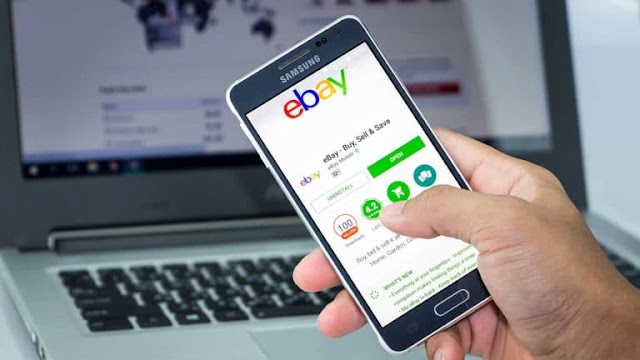Important eBay Selling Tips to help you Maximize Your Profits
He wasn’t sloppy or dirty – he just stacked and stored old Nintendo systems and video games everywhere. The scene seemed a little ridiculous, but he had quite a little business going. He’d buy “broken” Nintendos and games on eBay, fix them, clean them up, and re-post them for a decent profit.
From his Nintendo venture, I learned plenty of good tips for selling items on eBay. I also learned quite a bit about what not to do from the people he was buying from. Using these tricks, I have been able to maximize my own profits on eBay.
Try these ten tips and you’ll see your bottom line increase too.
1. Know When to Use eBay
The first step in maximizing profits is to choose the right venue in the first place. You need to know how to choose between eBay and other options, such as Craigslist, Amazon, or even a garage sale. Use eBay for items that are:
- Easy to ship. I once sold tires on eBay and had to send them across the country. Bad idea.
- Popular. This way, you can attract multiple bids from potential buyers.
- Rare. You’ll want to draw potential buyers who would have trouble purchasing your items elsewhere.
- Convenient to sell online. If judging the quality of your items requires a hands-on experience, don’t sell them in a virtual marketplace.
2. Choose Your Words Wisely
When listing your item on eBay, choose your wording carefully and use the right keywords. Keep your title concise, but use as many descriptive words as you effectively can, so that your item will appear in more searches. The more descriptive you are, the fewer questions you’ll have to deal with from possible buyers. To find the right keywords, consider all of the terms you might use to describe the item, and then fit the words together. For example, instead of “Xbox 360,” use “Xbox 360 Video Game Console System Controllers.” Do a search in eBay to look for examples of similar listings with a lot of activity.
3. Be Honest
Some people may claim that being honest about an item can cost you money, but if you tell the truth, you’ll gain a better reputation on eBay. And improving your reputation will boost sales. Reputation is key in the eBay community, and eBay does a great job of generating feedback and encouraging users to make use of the reputation tools. People are often tempted to complain, and it’s very easy to get negative comments that can hurt you long term. So if there’s a scratch or dent on an item, be upfront about it. While you might make a few sales at lower prices, hiding imperfections will cost you even more in the long run. Some bidders are even looking for some used or refurbished items that they can fix up, but no one likes being surprised by an item in poor condition.
4. Create a Professional Listing
With any business, the more professional you look, the more people will trust you. Make sure you have good pictures of your item and a clear, well-written description. You can save time by using eBay’s listing generator and saving a sleek, organized template for your listings.
A bulleted list in your description will be very attractive for potential bidders. You’ll catch more attention with short, informative lines that don’t waste time or take up a lot of space. And don’t overdo categorization. You’ll have to pay extra to list your item in multiple categories, so unless you’re selling for $500 or more, just pick the one best category.
5. Take Good Pictures
Don’t go crazy with pictures; quality is far more important than quantity. Photos are a great tool for sales, but you don’t need more than three per item.
Investing time in the visual appeal of your item will pay off when buyers start bidding. Make sure that your pictures represent the item well by taking pictures from all sides and angles. Use an appropriate amount of lighting, and use a neutral background. Remember, no one wants to see your item in the context of your messy house. Do not post any blurry pictures. If your item does have an imperfection, take a picture of it.
Since eBay will charge you for posting multiple pictures on your listing, link to your pictures for free by uploading them on picture-sharing sites such as Flickr, Photobucket, or ImageShack.
6. Set the Right Price
Choosing the best price for your eBay item is an art. If you’re selling a popular item, set the starting price low, like $9.99 or even $0.99, and let the demand in the marketplace drive the price up. If you are trying to sell a more obscure or less desirable item, then set the price at the lowest level that you are willing to accept. You may not see it move very much.
Using the reserve price option is usually a bad move. They’re typically very expensive and can discourage potential bidders from getting involved. The ideal time to use a reserve price is when you have a high-end item but you’re worried about a low level of interest. In that case, it’s a good way to protect yourself from taking a big loss.
A little homework can help you successfully set the right price. Check out the advanced search tool on the upper righthand corner of any eBay page, and check the “completed listings only” box to see the final prices of successful sales.
7. Choose Start and End Times Wisely
Start your auction at night. Statistics show that more users are online buying on eBay in evening hours, and Sunday night is the most lucrative night. Since eBay only charges ten or fifteen cents to set a schedule for your auction, it’s worth the expense, but don’t forget about the various time zones that apply to your audience. If evenings aren’t convenient for you, just don’t end the bidding for your item at 3 am on a Tuesday. Very few people will bid on your item if they won’t be available for the closing minutes.
8. Be Clear about Your Policies
To avoid any confusion and to maintain your reputation, make sure your listing is clear about any policies that you may have, on returns and shipping for example. You don’t want to waste time dealing with an upset customer because you weren’t open about your policies upfront. That’s time you could be spending on selling another item.
Use a seven-day return policy that requires customers to pay for half of the shipping costs. Customers are more likely to take a chance on your item if they know that they can return it, but if they have to pay for part of the return shipping, they’re less likely to take advantage of you.
9. Ship Smartly, and Don’t Inflate the Cost
Inflated shipping costs and the “penny to buy, $40 to ship” method really turn buyers off. If they see an unreasonable shipping cost, they won’t even give your item a chance. In fact, if the actual shipping cost is low, I recommend you don’t even charge anything for shipping and take the loss. Free shipping is very attractive to potential bidders.
When you ship, make sure that you pack fragile items securely. Invest in some bubble wrap or styrofoam peanuts (you can get a good deal by buying in bulk) or just use some newspaper if you’re in a pinch. If you have a paper shredder, you can shred up some old magazines to use as stuffing. While you’re protecting the item, remember that some packages get wet in the rain during shipping, so protect clothing, books, and other sensitive items from the elements by wrapping with plastic bags or other padding material.
USPS Priority mail has been the most convenient method for me, especially for small items. It usually costs about $8 and gets to my buyers in two or three days, and best of all, the U.S. Postal Service provides free boxes and tape! If you have international customers, discuss their country’s particular shipping rules and costs before you finalize how you’ll handle shipping expenses.
10. Practice Good Customer Service
In the eBay community, it’s not tough to provide good customer service, and it goes a long way. Don’t be a seller who forgets about maintaining a postive relationship with your buyers; be the one who stands out for excelling at customer service.
Respond to your bidders’ questions in a timely manner. Even if you don’t have a final answer ready, let them know you’re paying attention and that you’ll return with a response. Promptly send your invoices, and let your buyers know when their item is on the way. Take pride in your packaging, and go the extra mile and provide a packing slip. It’s a nice touch that your customers will appreciate.
Be kind and courteous, just like you’d expect to be treated face-to-face in a brick-and-mortar store. Be flexible and work with your buyers if there are some special circumstances that are within reason. But never negotiate the terms of payment. Make sure all transactions go through eBay in some way – you’ll be vulnerable to fraud when you go outside of the eBay system.
Final Word
Although there is fierce competition from online shopping sites like Amazon or Craigslist, eBay is still the biggest name in online sales. It’s easy to get started, but it takes a little more work to be a big success.
You might find the large, competitive marketplace a little intimidating at first, but you can quickly become a major player if you play your cards right. Equipped with these ten tips, you take advantage of eBay’s best tools and opportunities, and watch the bids climb.
Are you a new eBay salesperson, or an experienced user? What are some of the items that brought in the most money during your eBay selling experience?



Comments
Post a Comment